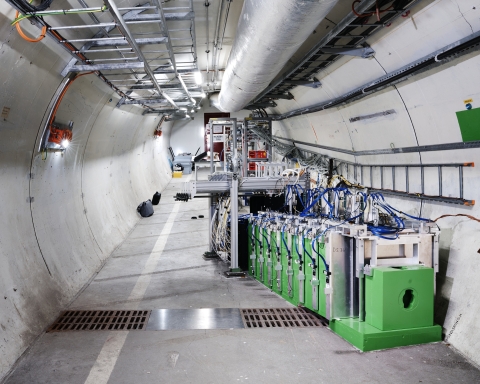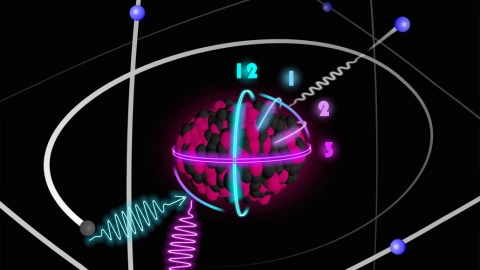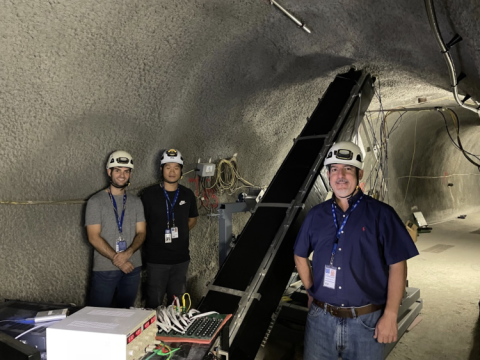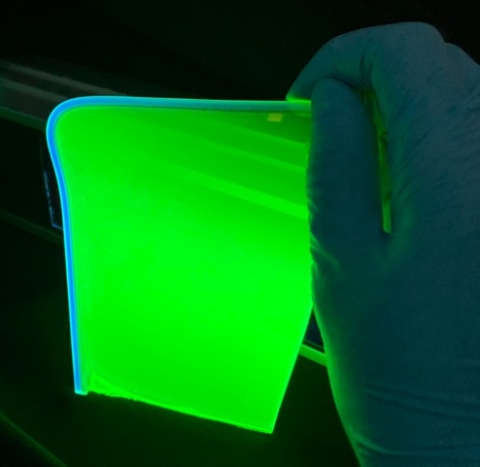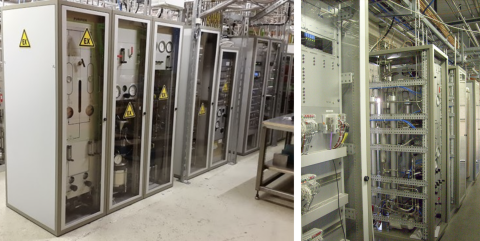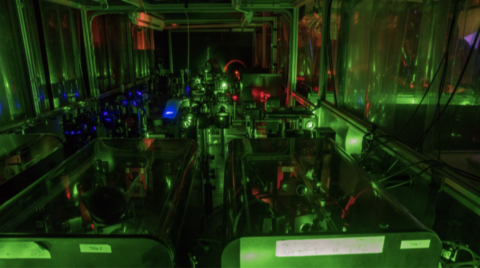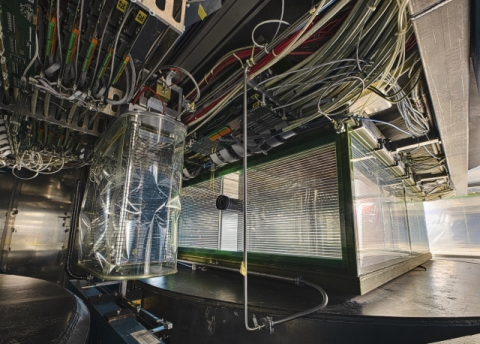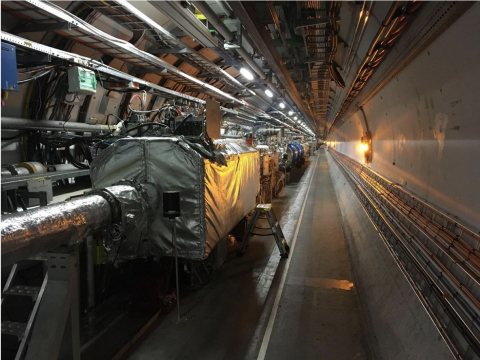SME
Chronicles of SND@LHC’s first year of data taking
The year 2022 saw the culmination of 18 months of intense preparatory work with the SND@LHC Collaboration entering the highly anticipated phase of commissioning with beam and first year of data taking. After the installation of the neutron shield…
Read moreRadioactive ion beams at ISOLDE bring the nuclear clock a tick closer
The precise measurement of time and frequencies has always played an important role in the history of science. Since the adoption of the caesium-133 standard as the definition of the second within the Système International (SI) in 1967, a network of…
Read moreHIKE collaboration targets a new era of kaon experiments
The recently proposed High Intensity Kaon Experiments (HIKE) project offers a long-term vision for a research programme at CERN, covering experimental searches in the kaon sector that could enable a new generation of searches and indirectly probe…
Read moreMILLIQAN gets ready to have a look at the dark
The milliQan collaboration is on track to finish the installation and commissioning of their Run 3 detector before the end of the YETS, Components of both the “bar” and “slab” detectors have been placed in a tunnel above the CMS experimental cavern…
Read moreThe birth of NanoCal
High-performance electromagnetic calorimeters often make use of inorganic crystal scintillators. Their high density makes them well suited for the construction of large homogeneous detectors where the scintillating material simultaneously serves as…
Read moreR&D on gas usage in the LHC particle detection systems.
A wide range of gas mixtures is used for the operation of different gaseous detectors for particle physics research. Among them there are greenhouse gases like C2H2F4 (R134a), CF4 (R14), C4F10 (R610) and SF6, which are needed because they allow to…
Read moreThe LISA project at CERN-ISOLDE
The LISA (Laser Ionisation and Spectroscopy of Actinides) consortium aims to train a new generation of experts in radioactive ion beam research and applications, laser spectroscopy, scientific laser…
Read moreHunting for charm with lead and SHINE
SHINE (SPS Heavy Ion and Neutrino Experiment) [1] is a multi-purpose experiment studying hadron production in hadron-proton, hadron-nucleus and nucleus-nucleus collisions. The programme on strong interactions includes studying the properties…
Read moreA new CEDAR for the NA62 experiment
The NA62 experiment at CERN studies kaon decays using a decay-in-flight technique, with the primary aim of the precise measurement of the K+ → π+νν branching fraction. The kaons are delivered to the experiment in a beam of 75 GeV/c positively-…
Read moreLHCf and cosmic ray investigation in run 3
Installation location of the LHCf Arm2 detector in the absorber region 140m right of the ATLAS interaction point The first LHCf special run of the LHC Run 3 was successfully completed in September 2022, with the LHC providing the highest…
Read more
